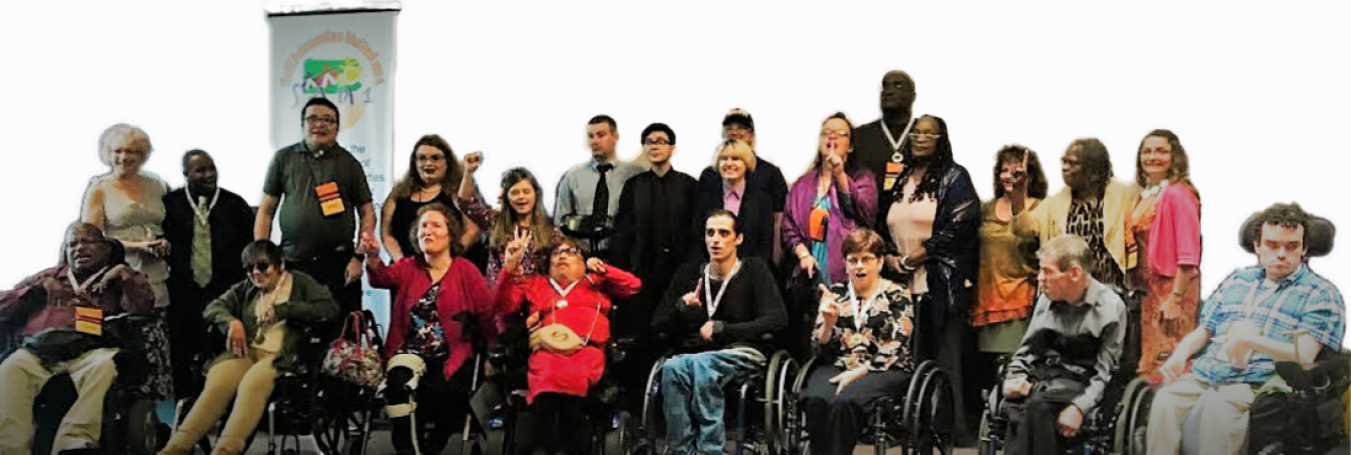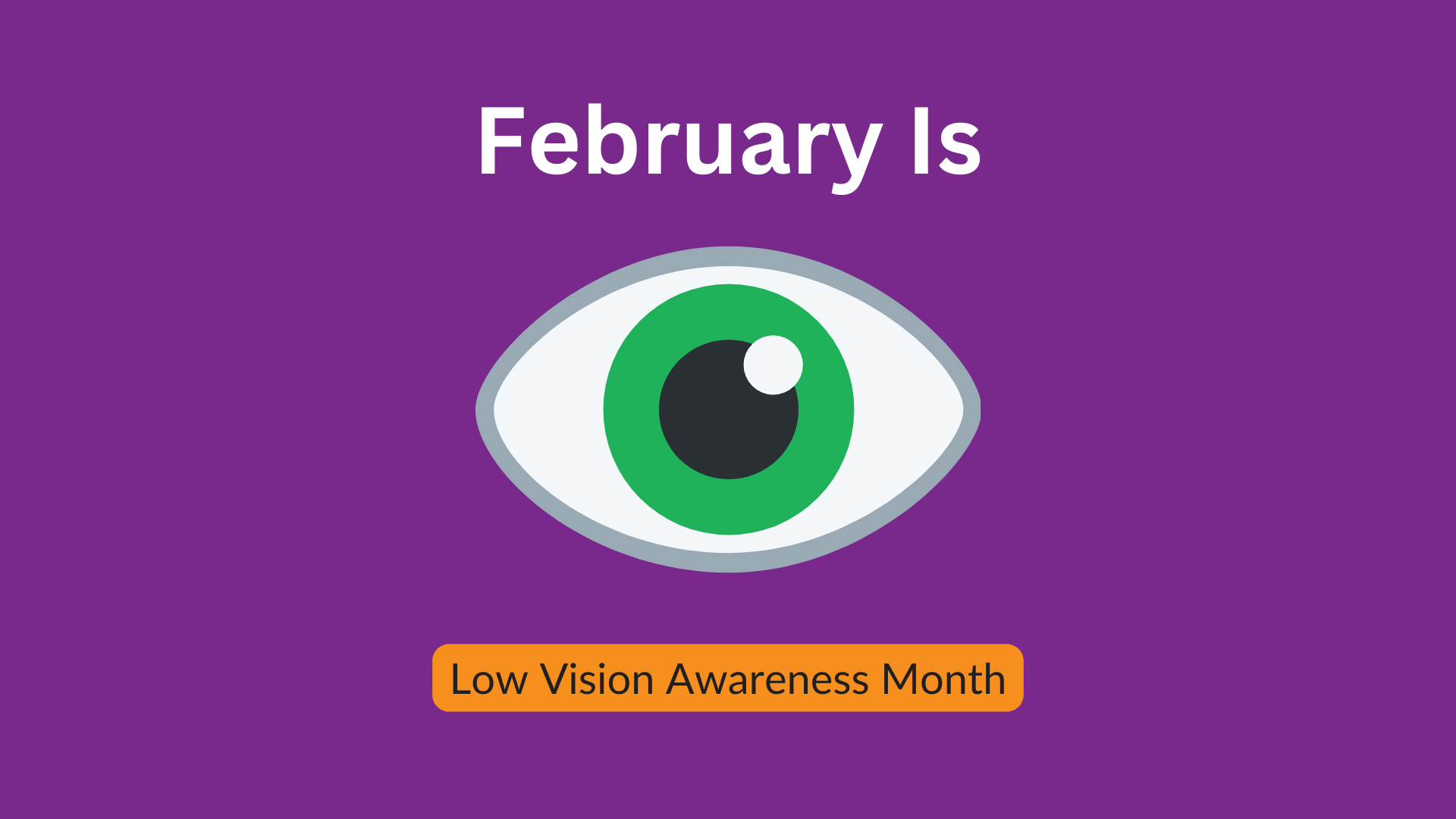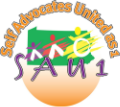
Opening Eyes, Opening Minds: Ways to Celebrate and Support Low Vision Awareness

February is Low Vision Awareness Month. The Optometry Center for Vision Therapy says low vision is “vision loss that cannot be corrected by medical, surgical, or corrective lens treatment (wearing glasses). Those who struggle with low vision often experience difficulty in everyday tasks such as reading, shopping, writing, cooking, watching TV, or recognizing faces.”
You might be asking yourself, how common is low vision? And what can I do to help raise awareness? These are both really good questions. You might be surprised to learn the answers.
The Glaucoma Research Foundation says, “Currently, 4.2 million Americans ages 40 and older are visually impaired. Of these, 3 million have low vision.”
So how can you get involved and raise awareness for low vision during Low Vision Awareness Month? The National Eye Institute (NEI) has a great page of resources where you can learn about vision rehabilitation services that “can help people with a visual impairment make the most of the vision they have so they can keep doing the things they love.” It also includes information about the Virtual Reality Eye Disease Experience where you can find out about the NEI: VR See What I See app, and what things look like for people with different vision impairments. You can also check out their examples of ways to share about Low Vision Awareness Month on social media (they mention Facebook and Twitter which is now X, but the posts would work for other social media platforms too).
Low vision can affect anyone, but did you know it is more common in those with physical limitations? The National Library of Medicine tells us, “Children with disability are at a substantially higher risk of visual impairment (10.5% compared with 0.16%) of the overall population.”
At SAU1, we recognize the importance of everyone's right to have access to information. Because of this, we have an accessibility coordinator to make sure that all information is accessible to everyone. That includes those with low vision.
Sierra Shipton, Accessibility Coordinator for SAU1 gives these tips for making sure your content is accessible to those with low vision and other varying degrees of disability:
- Make sure that text is easy to see against the background color (contrast).
- Make sure that PDF documents are tagged correctly so that they can be read by screen readers or other assistive technology.
- Use text that is at least 16 point font (unless space is tight then use 14 or 12 points depending on space).
- Use fonts that are easy to read (we mainly use Arial or Cambria).
- Use audio description for videos with important non-text content so that what it is in images and other visual parts of the videos is described out loud.
- Include alt text for images so that folks know what is in them if they are using a screen reader.
If you are looking for more tips on how to make things accessible for those with low vision, you can reach out to us at SAU1.
The Pennsylvania Office of Rehabilitation (OVR) also has a vision rehabilitation therapy program that you can look into if you need additional in-home services. To find the appropriate office for your county visit the PA OVR website.

 Accessibility
Accessibility